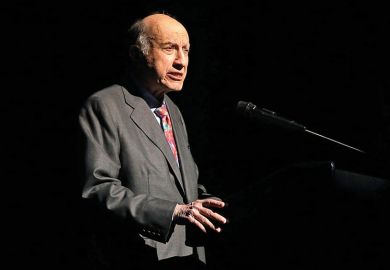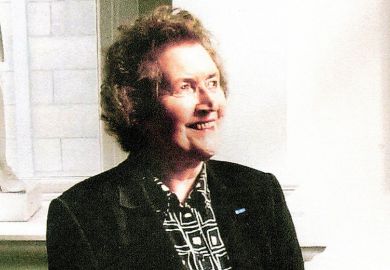The president who steered a traditional Catholic women’s college through the turbulent 1960s has died.
Margaret Claydon was born as Susan Claydon in New Rochelle, New York in 1923 and studied at New Rochelle High School and, from 1941, at what was then Trinity College (now Trinity Washington University), a private Catholic women’s college in Washington DC. She gained a doctorate in English literature from the Catholic University of America, joined the Sisters of Notre Dame de Namur in 1946 and taught Latin at some of their high schools before returning to Trinity to teach in the English department in 1952. She was appointed president of the university in 1959.
Only 36 when she took on this role, Sister Margaret soon faced the challenges of a turbulent decade for both American universities and the Catholic Church, when many were questioning the value of small and traditional women’s colleges. Yet she was a moderniser by temperament and opened her presidency by calling a press conference and announcing her commitment to women’s leadership. “We’re not in the business of training committee women or bridge players,” she said.
Sister Margaret greatly increased the size and diversity of the student body, improved the facilities and established the autonomy of the college by ensuring the majority of trustees were lay rather than religious. Her eminence led to her being the only female delegate to a meeting of Catholic college presidents held at the Vatican in 1972, although she long wryly remembered the difficulties she encountered in getting her voice heard.
In a statement on her website, Nancy Pelosi, who graduated from Trinity in 1962 and went on to become the first woman to serve as speaker of the US House of Representatives, described Sister Margaret as “a leader of penetrating intellect, firm faith and inquiring mind, whose keen sense of purpose and courage to question the status quo was an inspiration to all who walked through our school’s halls. For the women in my class and me, Sister Margaret – with her youth, sophistication and success – was a symbol of strength and empowerment, whose leadership was a reminder that women could become not only a secretary or treasurer, but a president – or the speaker of the House.”
By the early 1970s, the trend for formerly all-male universities to admit women was putting great pressure on recruitment at Trinity. Sister Margaret resigned from the presidency in 1975, took a sabbatical at Yale University and then returned to her teaching role at Trinity until she retired in 2004, although she continued to live within the religious community there until 2015. She died on 1 February.
Register to continue
Why register?
- Registration is free and only takes a moment
- Once registered, you can read 3 articles a month
- Sign up for our newsletter
Subscribe
Or subscribe for unlimited access to:
- Unlimited access to news, views, insights & reviews
- Digital editions
- Digital access to THE’s university and college rankings analysis
Already registered or a current subscriber?




